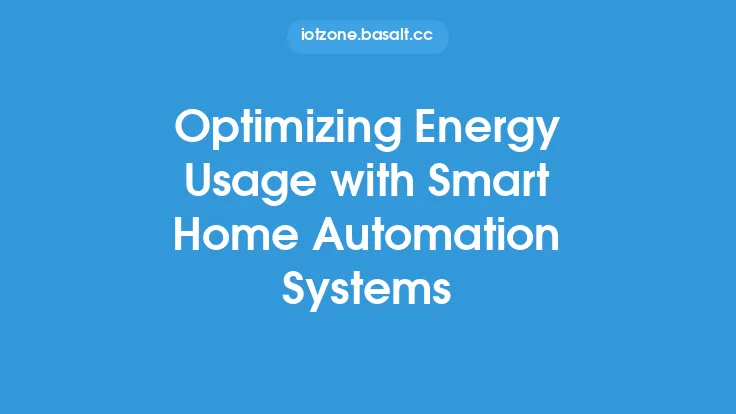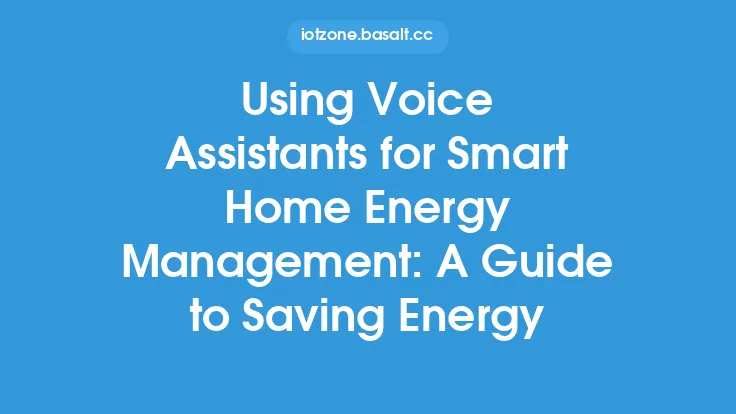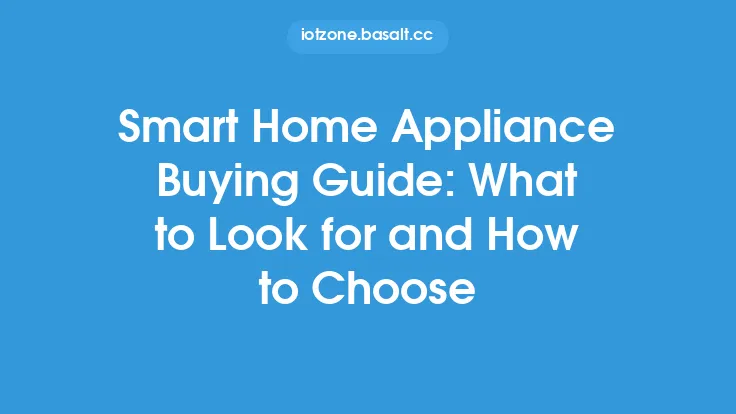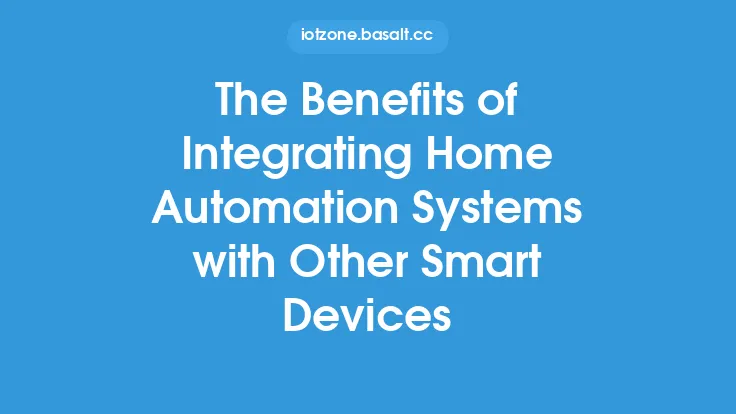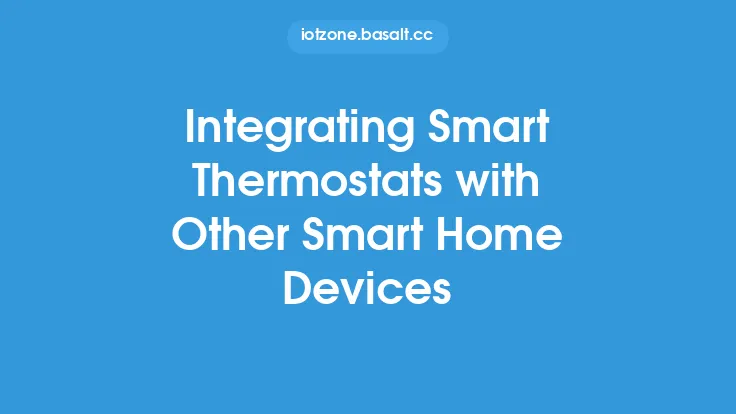Reducing energy consumption is a crucial aspect of smart home automation, and one of the most effective ways to achieve this is by utilizing smart home devices. These devices are designed to optimize energy usage, reduce waste, and provide homeowners with valuable insights into their energy consumption patterns. In this article, we will explore the various ways in which smart home devices can help reduce energy consumption, and provide a comprehensive guide on how to get started.
Introduction to Smart Home Devices
Smart home devices are an integral part of any smart home automation system. These devices are equipped with advanced sensors, algorithms, and communication protocols that enable them to collect and analyze data, make decisions, and take actions to optimize energy consumption. Some common examples of smart home devices include smart thermostats, smart lighting systems, smart plugs, and smart home hubs. These devices can be controlled remotely using a smartphone app, voice assistant, or web portal, making it easy to monitor and manage energy consumption from anywhere.
How Smart Home Devices Reduce Energy Consumption
Smart home devices reduce energy consumption in several ways. Firstly, they can detect and eliminate standby power consumption, also known as vampire power, which occurs when devices are turned off but still consume energy. Smart plugs, for example, can be used to turn off devices completely, eliminating standby power consumption. Secondly, smart home devices can optimize energy usage by learning a homeowner's schedule and preferences, and adjusting energy consumption accordingly. For instance, a smart thermostat can learn a homeowner's daily schedule and adjust the temperature to conserve energy when the home is unoccupied. Thirdly, smart home devices can provide real-time energy usage data, enabling homeowners to identify areas of energy waste and take corrective action.
Smart Thermostats and Energy Consumption
Smart thermostats are one of the most effective smart home devices for reducing energy consumption. These devices can learn a homeowner's schedule and preferences, and adjust the temperature to conserve energy when the home is unoccupied. Smart thermostats can also detect when a homeowner is away from home and adjust the temperature accordingly. Some smart thermostats also come with geofencing capabilities, which allow them to detect when a homeowner is approaching or leaving home, and adjust the temperature accordingly. Additionally, smart thermostats can provide detailed energy usage reports, enabling homeowners to identify areas of energy waste and take corrective action.
Smart Lighting Systems and Energy Efficiency
Smart lighting systems are another effective way to reduce energy consumption in the home. These systems use advanced LED lighting and smart sensors to optimize energy usage. Smart lighting systems can be programmed to turn off lights when a room is unoccupied, or to adjust the brightness and color of the lights based on the time of day. Some smart lighting systems also come with energy-harvesting capabilities, which allow them to generate energy from natural light sources, reducing the need for artificial lighting. Additionally, smart lighting systems can provide detailed energy usage reports, enabling homeowners to identify areas of energy waste and take corrective action.
Smart Home Hubs and Energy Management
Smart home hubs are the central nervous system of any smart home automation system. These devices integrate with various smart home devices, including smart thermostats, smart lighting systems, and smart plugs, to provide a comprehensive energy management system. Smart home hubs can collect and analyze data from various smart home devices, providing homeowners with valuable insights into their energy consumption patterns. They can also be used to control and automate various smart home devices, optimizing energy usage and reducing waste. Some smart home hubs also come with advanced energy management features, such as energy forecasting and load management, which enable homeowners to optimize their energy usage and reduce their energy bills.
Implementing Smart Home Devices for Energy Reduction
Implementing smart home devices for energy reduction is a straightforward process. The first step is to identify areas of energy waste in the home, such as standby power consumption or inefficient lighting. The next step is to select the right smart home devices for the job, such as smart plugs, smart thermostats, or smart lighting systems. Once the devices are installed, they can be controlled and automated using a smartphone app, voice assistant, or web portal. It's also important to monitor and analyze energy usage data to identify areas of energy waste and take corrective action. Additionally, homeowners can use energy management features, such as energy forecasting and load management, to optimize their energy usage and reduce their energy bills.
Best Practices for Using Smart Home Devices
To get the most out of smart home devices, there are several best practices to follow. Firstly, it's essential to choose devices that are compatible with each other and with the smart home hub. Secondly, it's crucial to read and follow the manufacturer's instructions for installation and use. Thirdly, it's important to monitor and analyze energy usage data regularly to identify areas of energy waste and take corrective action. Fourthly, it's a good idea to automate smart home devices to optimize energy usage and reduce waste. Finally, it's essential to keep smart home devices and software up to date to ensure optimal performance and security.
Technical Considerations for Smart Home Devices
When it comes to smart home devices, there are several technical considerations to keep in mind. Firstly, it's essential to ensure that devices are compatible with each other and with the smart home hub. This requires a good understanding of communication protocols, such as Zigbee, Z-Wave, and Bluetooth. Secondly, it's crucial to consider the power consumption of smart home devices, as some devices may consume more energy than others. Thirdly, it's important to ensure that smart home devices are secure and protected from cyber threats. This requires a good understanding of security protocols, such as encryption and authentication. Finally, it's essential to consider the scalability and flexibility of smart home devices, as the number of devices and complexity of the system may increase over time.
Conclusion
In conclusion, smart home devices are an effective way to reduce energy consumption and optimize energy usage in the home. By utilizing smart thermostats, smart lighting systems, smart plugs, and smart home hubs, homeowners can reduce energy waste, lower their energy bills, and contribute to a more sustainable future. By following best practices and considering technical factors, homeowners can get the most out of their smart home devices and enjoy a more comfortable, convenient, and energy-efficient living space. As the smart home automation industry continues to evolve, we can expect to see even more innovative and effective solutions for reducing energy consumption and optimizing energy usage in the home.
